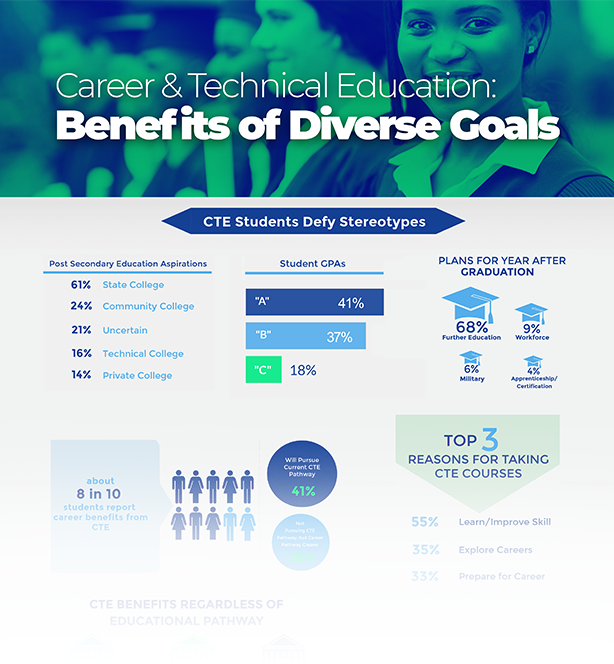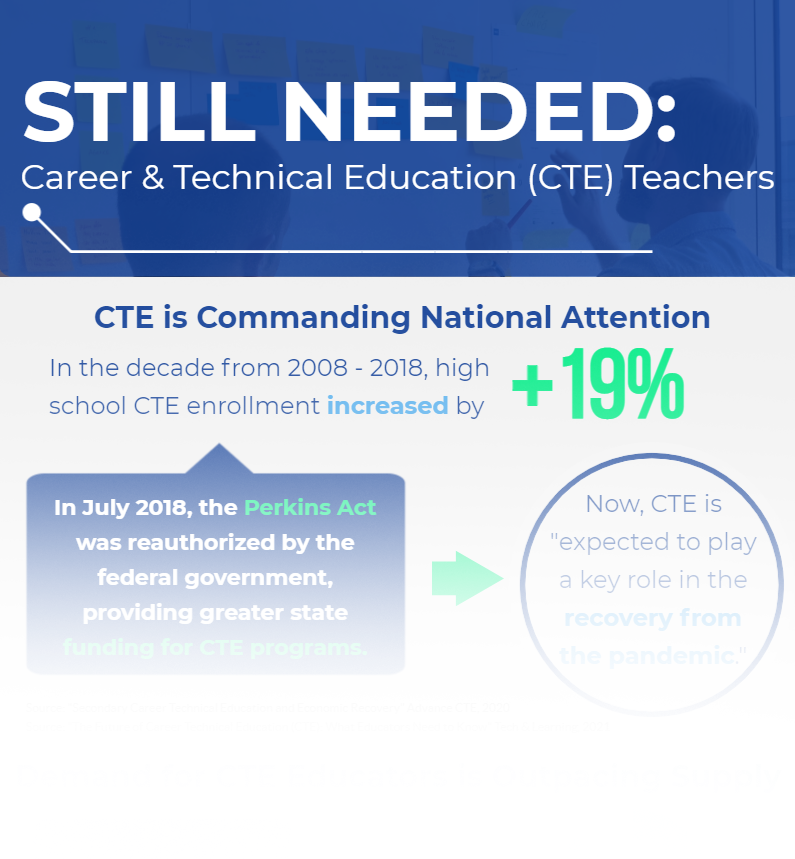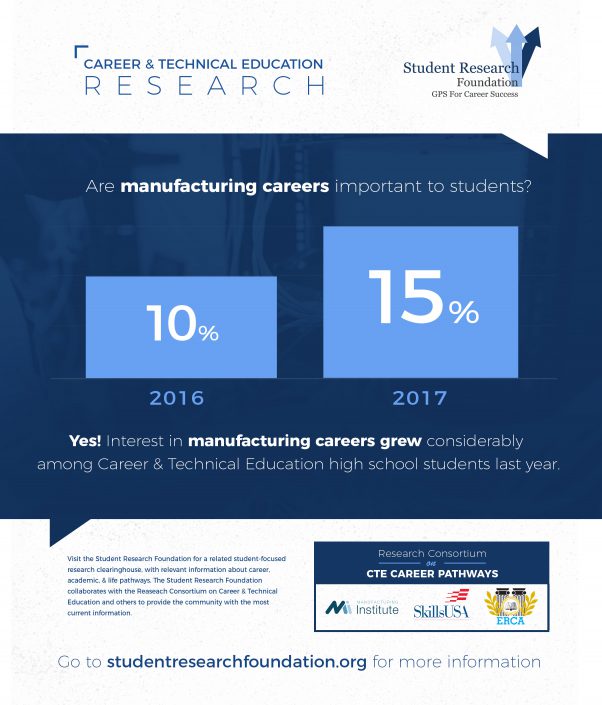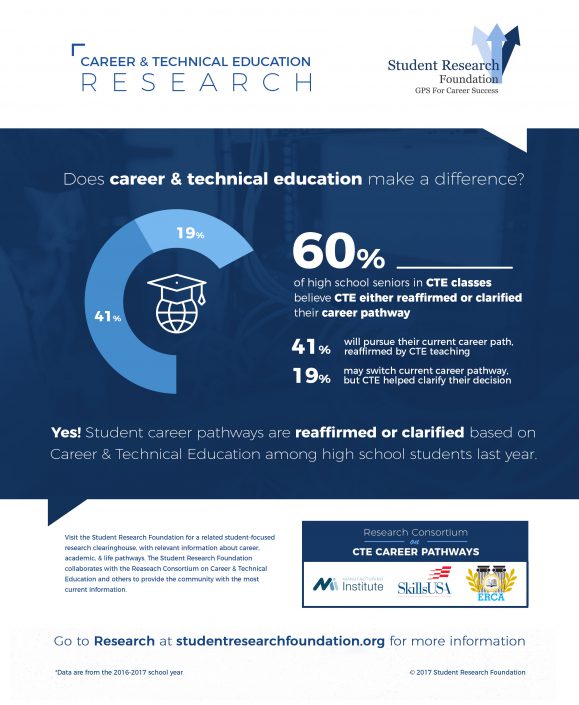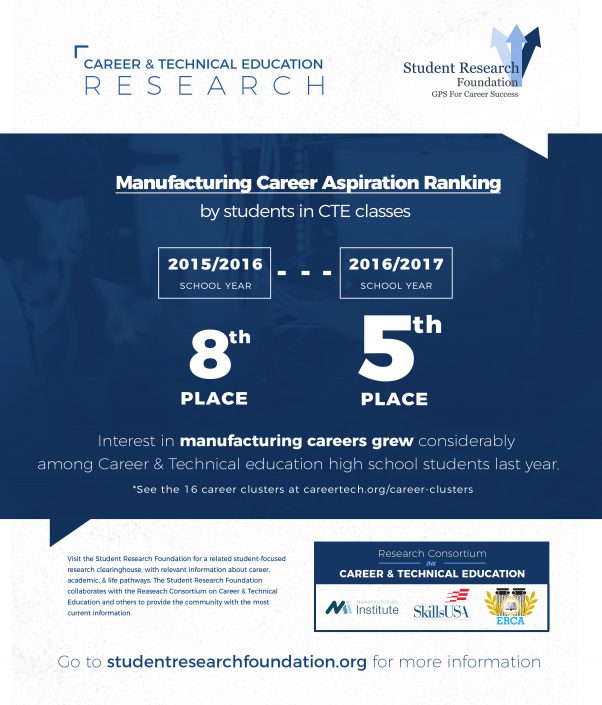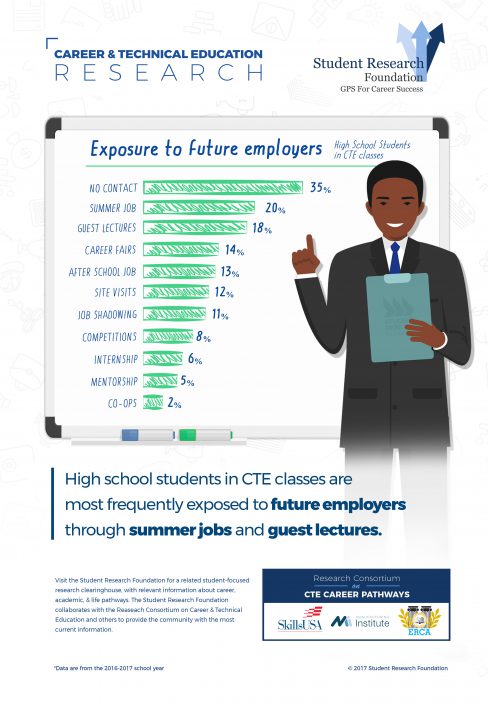Career and Technical Education (CTE) plays a vital role in preparing today’s students to be skilled for work and life in a changing, dynamic world. Career & Technical Education has changed to keep current with the 4th Industrial Revolution. Students are now exploring careers in 3D printing, coding, and since now everyday appliances are IOT (internet of things) enabled their technical training includes learning how to work with sensors and IOT technology. There are still many career options for students looking to enter culinary, automotive, cosmetology and the manufacturing fields.
We survey students to learn what they are looking for as they explore careers in the various technical education pathways.
- Although the majority of CTE high school students say they have been exposed to future employers in a variety of ways (65%), the remainder say they have not yet had that contact (35%).
- 60% of CTE students say they have affirmed or clarified their career pathway through CTE experiences.
Click on the research findings below to find out more!









